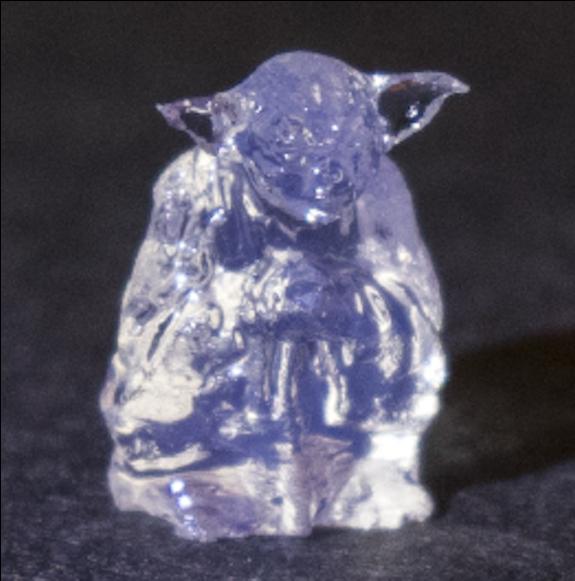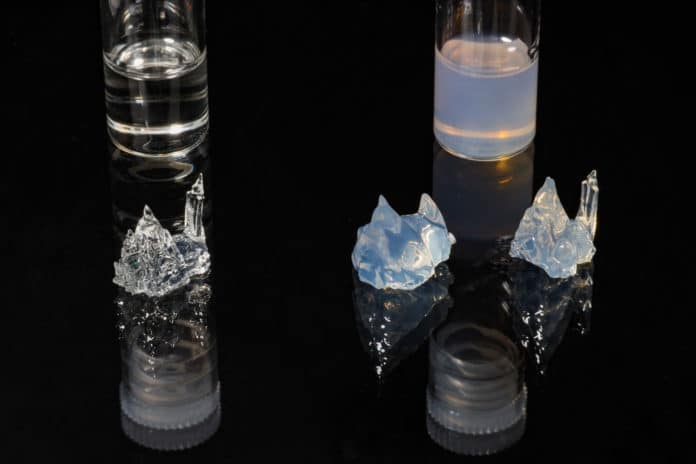EPFL engineers have proposed a 3D-printing method that uses light to make objects out of opaque resin in seconds.
More from the News
3D printing has revolutionized the manufacturing of volumetric components and structures in many areas. In recent years, volumetric light-based techniques allowed 3D printing in short print time (down to a few tens of seconds) while keeping a good resolution (around 100 μm). However, these new approaches only work with homogeneous and relatively transparent resins.
In 2017, engineers at EPFL’s Laboratory of Applied Photonic Devices (LAPD), within the School of Engineering, designed a 3D printer that can fabricate objects almost immediately. Five years later, scientists have improved their printing machines and method. They can now create things using opaque resin – something never before possible.
Most 3D printers work by depositing material in a process called additive manufacturing—the new 3D printing method, the volumetric method.

A tiny Yoda. © 2022 EPFL
Christophe Moser, a professor at LAPD, said, “We pour the resin into a container and spin it. Then we shine a light on the container at different angles, causing the resin to solidify wherever the accumulated energy in the resin exceeds a given level. It’s an exact method and can produce objects at the same resolution as existing 3D-printing techniques.”
“The engineers’ volumetric method can be employed for objects of just about any shape, and they decided to test it by creating a tiny Yoda. It took just 20 seconds for them to make the figurine, versus around ten minutes for a conventional additive-manufacturing process.”
The method works only if the light passes through the resin straightly without being deviated. The light rays solidify the resin by interacting with a photosensitive compound contained in the plastic.
Antoine Boniface, a postdoc at LAPD, said, “Until now, we’ve always used transparent resin, but we wanted to see if we could print objects in the kind of opaque resin used in the biomedical industry.”
The problem with employing opaque resin in volumetric processes is that light does not propagate smoothly, making it challenging to gather the energy required to harden the resin.
Jorge Madrid-Wolff, a Ph.D. student at LAPD, said, “With opaque resin, we lost a lot of resolution in the printed object. So we tried to come up with a solution that would let us fabricate objects in this resin but without losing the advantages of our 3D printer.”
Scientists first used a video camera to observe the light’s path through the resin. They then devised computer equations to adjust for the light-ray distortion. They configured their printer to perform these calculations while printing and changing the light rays. This ensured that the energy required to harden the resin was applied where it was needed.
By adjusting the computer calculations, engineers could print items in opaque resin with nearly the same precision as clear resin. This is a significant accomplishment.
According to experts, the LAPD method can be used to 3D-print biological materials, such as artificial arteries. Further, engineers plan to print several materials at once and increase their printer’s resolution from one-tenth of a millimeter to a micrometer.
Subscribe to AM Chronicle Newsletter to stay connected: https://bit.ly/3fBZ1mP
Follow us on LinkedIn: https://bit.ly/3IjhrFq
Visit for more interesting content on additive manufacturing: https://amchronicle.com/


